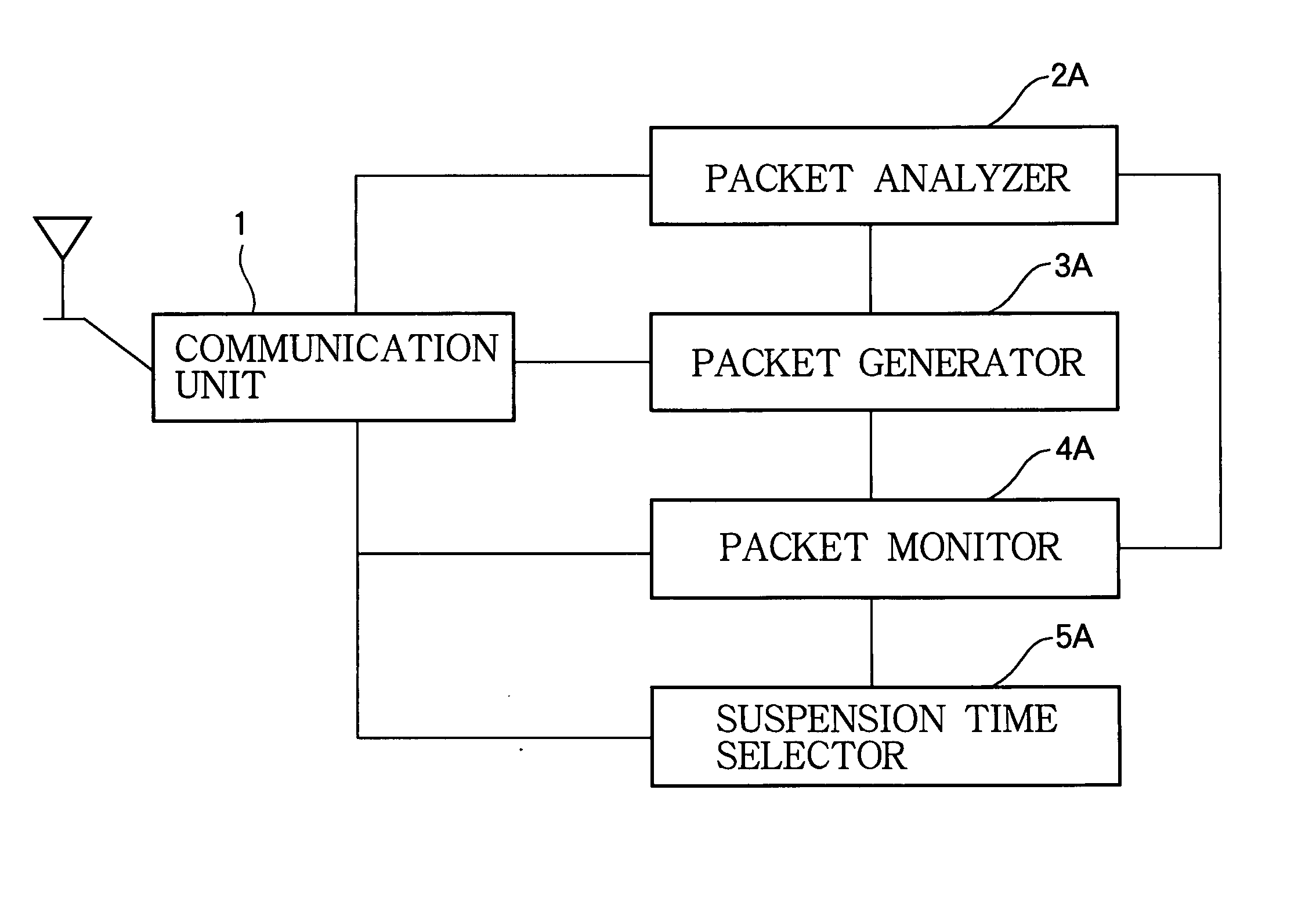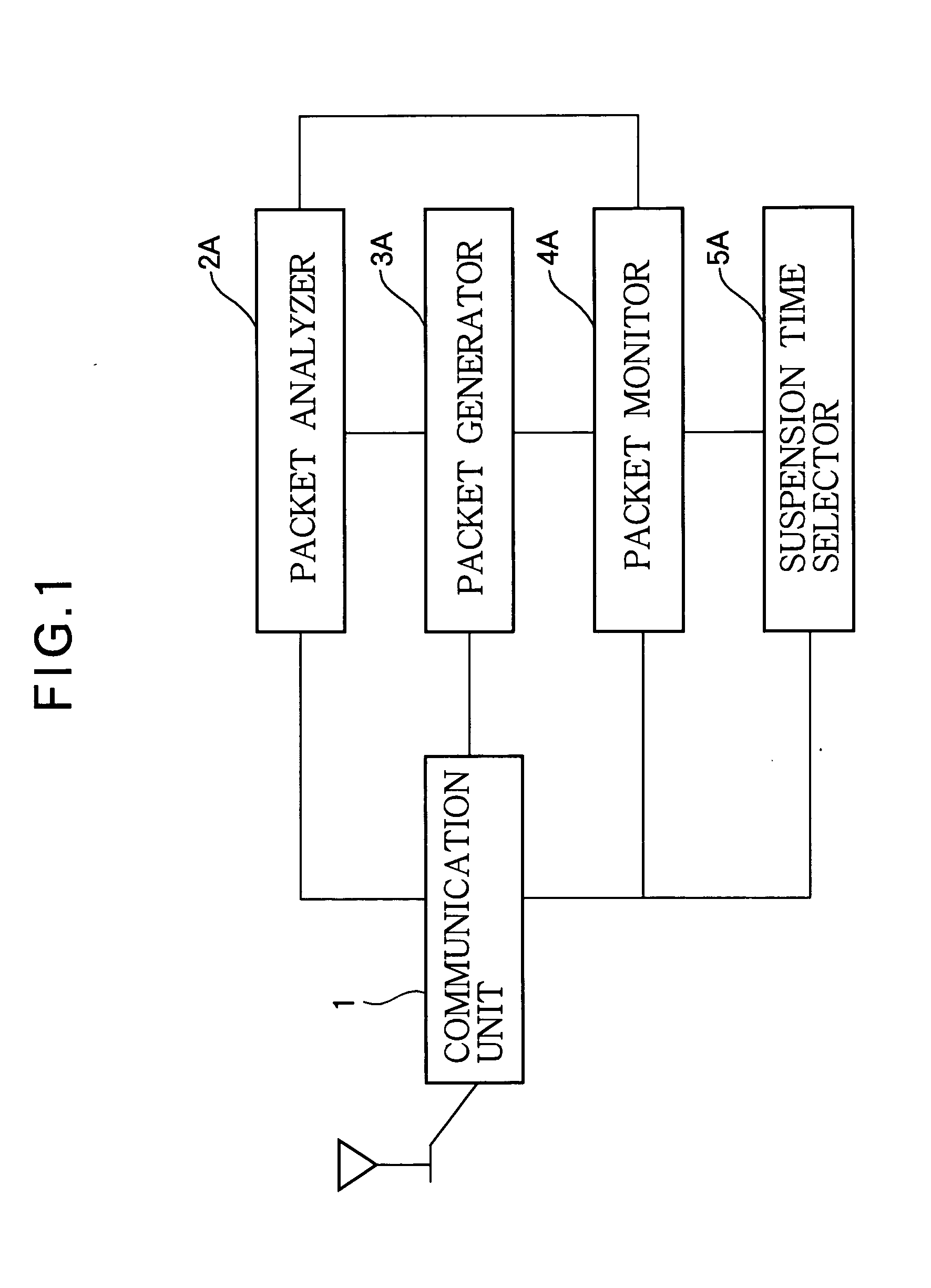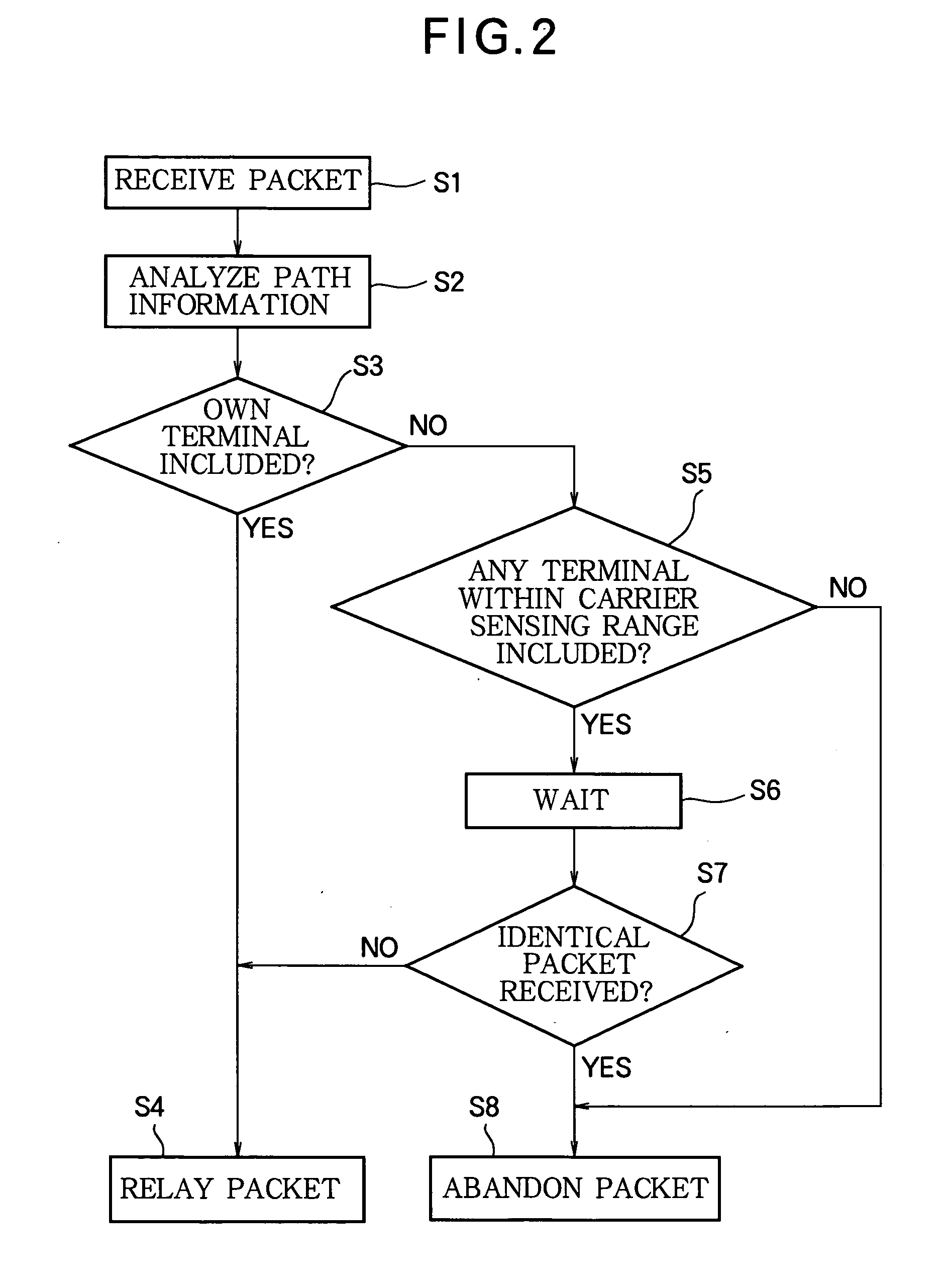Communication terminal and communication network
a terminal and communication network technology, applied in the field of communication networks, can solve the problems of packet signal interference or collusion, unstable single-path routing scheme, and conventional multi-path routing scheme, and achieve the effect of robust and stable communication routing
- Summary
- Abstract
- Description
- Claims
- Application Information
AI Technical Summary
Benefits of technology
Problems solved by technology
Method used
Image
Examples
first embodiment
[0034] The first embodiment is based on a source routing scheme in which packets are transmitted with attached information specifying the entire single-path route. When a source terminal communicates with a destination terminal, the routing process includes the following five steps.
[0035] Step 1: To confirm the feasibility of communication with the destination terminal, the source terminal floods the network with packets requesting communication with the destination terminal. Each terminal, other than the destination terminal, that receives one of these packets adds its own terminal identifier (ID) and transmits the packet onward. The terminal ID is a communication interface address, an Internet protocol (IP) address, a media access control (MAC) address, or other identifying information stored in the terminal. When the destination terminal receives these packets, it analyzes the added IDs to find the shortest route from the source terminal.
[0036] Step 2: When the destination term...
second embodiment
[0092] Referring to FIG. 25, a terminal in a second embodiment comprises a communication unit 1, a packet analyzer 2A, a packet generator 3A, a packet monitor 4A, and a suspension time selector 5B. The terminal structure is the same as in the first embodiment, except that a different suspension time selector 5B is employed. Only the function of the suspension time selector 5B will be described below.
[0093] Like the suspension time selector 5A in the first embodiment, the suspension time selector 5B sets the suspension time during which the packet monitor 4A retains a suspended packet. The suspension time selector 5B differs from the packet monitor 4B in that it is interconnected to the packet analyzer 2A, but not to the communication unit 1. The suspension time selector 5B uses the information provided by the packet analyzer 2A to monitor the transmission and reception of packets on the shortest path, and sets the suspension time for holding packets accordingly.
[0094] More specifi...
third embodiment
[0097] Referring to FIG. 26, a terminal in the third embodiment comprises a communication unit 1, a packet analyzer 2A, a packet generator 3A, a packet monitor 4A, and a suspension time selector 5C. The terminal structure is the same as in the first embodiment except for the use of a different suspension time selector 5C, so only the functions of the suspension time selector 5C will be described below.
[0098] Like the suspension time selector 5A in the first embodiment, the suspension time selector 5C sets the suspension time during which the packet monitor 4A holds a packet. The suspension time selector 5C differs from the suspension time selector 5A in that it is interconnected to the packet analyzer 2A as well as to the communication unit 1, and monitors both the carrier signal conditions and the packet transmission activity of nearby terminals in order to set the suspension time for holding packets.
[0099] The suspension time selector 5C sets the suspension time according to the...
PUM
 Login to View More
Login to View More Abstract
Description
Claims
Application Information
 Login to View More
Login to View More - R&D
- Intellectual Property
- Life Sciences
- Materials
- Tech Scout
- Unparalleled Data Quality
- Higher Quality Content
- 60% Fewer Hallucinations
Browse by: Latest US Patents, China's latest patents, Technical Efficacy Thesaurus, Application Domain, Technology Topic, Popular Technical Reports.
© 2025 PatSnap. All rights reserved.Legal|Privacy policy|Modern Slavery Act Transparency Statement|Sitemap|About US| Contact US: help@patsnap.com



